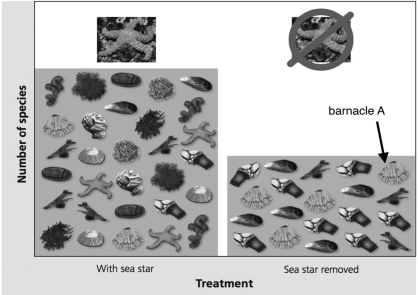Multiple Choice

-The figure shows the results of an experiment where sea stars were removed from communities. What is the effect of sea stars on barnacle A?
A) When sea stars are present, the relative abundance of barnacle A is lower compared to when sea stars are absent.
B) When sea stars are present, the relative abundance of barnacle A is higher compared to when sea stars are absent.
C) When sea stars are present, the species richness of barnacle A is lower compared to when sea stars are absent.
D) When sea stars are present, the species richness of barnacle A is higher compared to when sea stars are absent.
Correct Answer:

Verified
Correct Answer:
Verified
Q53: _ convert nitrogen from nitrates to N<sub>2</sub>.<br>A)Nitrifying
Q54: What is the estimated annual value of
Q55: The primary goal of conservation biology is
Q56: The present rate of species loss _.<br>A)suggests
Q57: Why are most food chains limited to
Q58: The atmosphere is approximately 80% _ gas.<br>A)CO<sub>2</sub><br>B)H<sub>2</sub>O<br>C)NH<sub>3</sub><br>D)N<sub>2</sub>
Q59: <img src="https://d2lvgg3v3hfg70.cloudfront.net/TB7803/.jpg" alt=" -Examine the figure.
Q60: <b>Scenario</b><br>Malaria is an infectious disease caused by
Q62: <b>Scenario</b><br>In East Java, Indonesia, a mud volcano
Q63: This graph shows the results of a